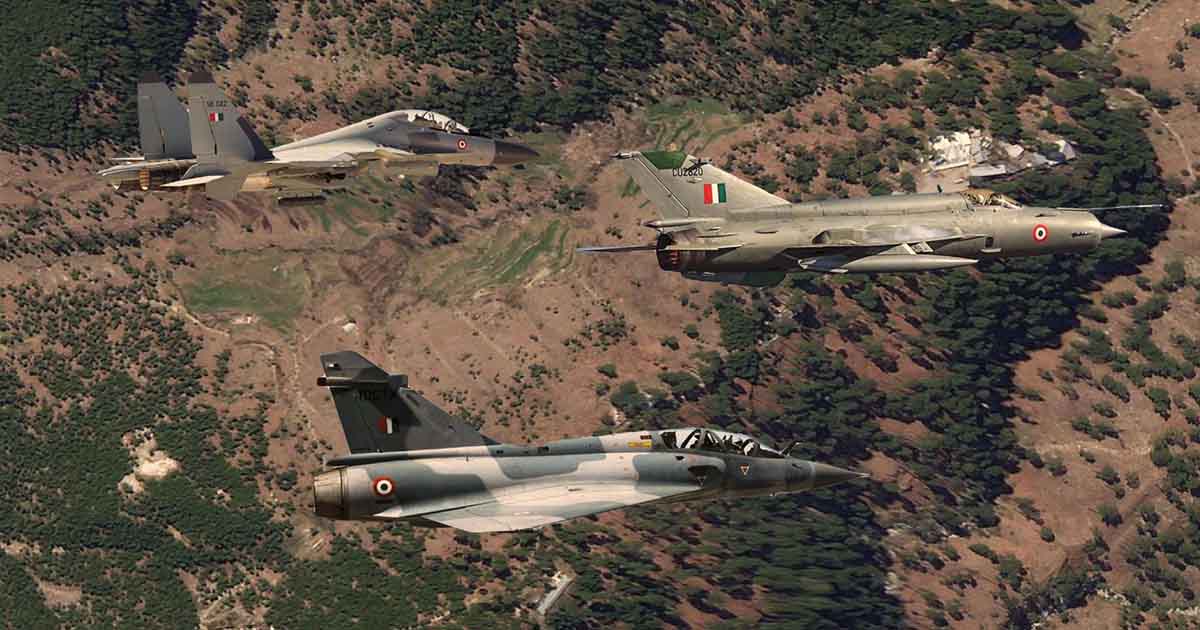The 2019 Balakot airstrike was a bombing raid carried out by Indian jets in Balakot, Pakistan, on February 26, 2019. The airstrike was carried out by India in the wee hours of the morning when Indian airplanes flew across the boundary in the disputed region of Kashmir and dropped bombs close to the town of Balakot in Pakistan’s Khyber Pakhtunkhwa province.
Later the same day, India confirmed the airstrike and described it as a preemptive strike against a terrorist training center that resulted in the deaths of “a substantial number” of terrorists.
The Digital Forensics Laboratory of the Atlantic Council, Planet Labs of San Francisco, European Space Imaging, and the Australian Strategic Policy Institute concluded from their analyses of open-source satellite imagery that India did not hit any significant targets.
Pakistan’s retaliation
On February 27, 2019, the Pakistani Air Force launched retaliatory airstrikes on three important Indian military locations in broad daylight.
When an Indian MI-17 was hit by a surface-to-air missile, six Indian Air Force (IAF) personnel, including a senior officer, were slain in fratricide. Everything took place on a day when the IAF was at its highest alert level.
Read More: India, Pakistan lambast PM Modi over Arnab Goswami, Balakot strike leaks
Pakistan’s response was well thought out and calibrated, responding in the same customary manner while maintaining complete escalation control and dominance. India was aware that any additional provocations would be met with a stronger response from Pakistan.
India’s response
The measures taken by Pakistan on the morning of February 27 were explicitly described as an “act of war” by the Indian administration. Any competent army with a threefold larger military force would have responded, but the Indian military and political leadership were operationally weak.
After the crushing defeat, Air Marshal Chandrashekharan Hari Kumar, the Air Officer Commanding-in-Chief of Western Command, was compelled to step down the next day, February 28, 2019.
The notions that had historically established Pakistan as the region’s first nuclear user were transformed. India was prepared to initially nuclearize the confrontation, as seen by Modi’s absurd bravado of “Qatal Ke Rat” the night after the air battle.
Without a cohesive public relations team, Indian forces were exposed. During a news appearance, the head of the Indian Air Force was clutching a piece of an AMRAAM missile and accusing Pakistan of employing F16s. It displayed the complete helplessness and despair of a military that was ill-prepared for contemporary warfare, both on the ground and in the air. Few people are aware that when word of Wing Commander Abhinandan’s detention emerged, the majority of Indian channels went off air for more than an hour.
The narrative that 350 people were killed at Balakot was set by the deranged media in India. This was a serious error since the entire world watched as India’s credibility was destroyed. Allegations that an F-16 was shot down were refuted by all reliable sources.
Despite being three times smaller in size, Pakistan established its mettle as a military force. The military operation is termed as “operation swift retort.”














